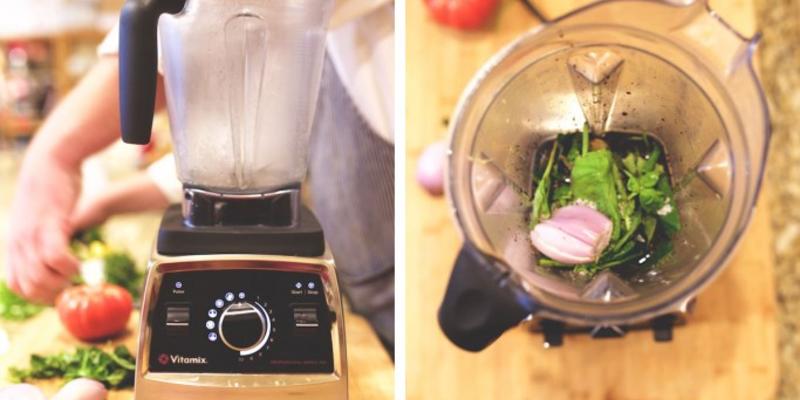

Five essential tools recommended by a chef that should have a place in your kitchen: a roto mac chopper dices and minces veggies in minutes with a few quick pulls of a cord; the microplane grater is a must-have for finely grating cheeses and zesting lemons & limes; pros swear by the vitamix blender for velvety soups, sauces and smoothies; a sturdy chef's knife, like this lightweight 8" global japanese knife, is perfect for everyday use; the Lodge Cast Iron pan imparts depths of seasoning and flavor into cooked foods and is the ultimate non-stick.
The Coastal Cupboard, is my favorite kitchen store. I'm a huge fan of the in-store kitchen, which hosts a variety of cooking classes with their resident chef, Bryan Breland. Chef Breland is an affable, knowledgeable chef who has great tips for cooks at all levels. I've incorporated his recipes and techniques into my everyday meal preparation, and trust me, my whole family has benefited from it.
Recently, I asked Chef Breland to recommend five essential chef's tools that any at-home chef should have. Listed above are his five top picks, and for the last two months, I've been testing and re-testing his recommendations here at home to give you my verdict. Actually, I've tested all but the Vitamix because at nearly $700 —yikes. That's a lot of clams to shell out for a blog post. (I purchased the Ninja instead, which I'll explain later.) Below are the five essential chef's tools he recommends, along with my verdict from the home cook's perspective.
1. Roto Mac Chopper, $24.99
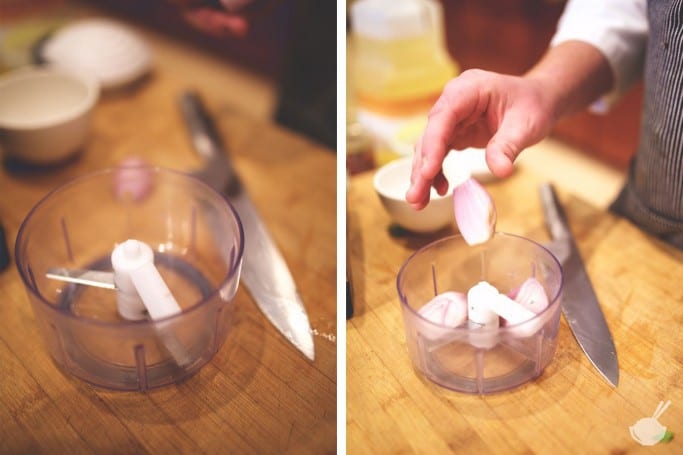

The Roto Mac is a handheld, no-battery mini food processor. For a mere $25, you can plop some shallots, garlic, or herbs into it, pop the top on, and pull a drawcord that turns the ultra-sharp blades. Fewer pulls of the cord gives you large, evenly chopped chunks; more pulls, naturally, mean a finer dice or mince. Chef Breland, whose cooking philosophy emphasizes simplicity, touted the Roto Mac as an easy alternative to having to haul out a food processor for a simple dice job. I was so enamored with this little gadget that I bought one of these from our friends at The Coastal Cupboard before I even left the store.
In the months since, it's still not the gadget I reach for the most. I think it's a little bit of a fussy device, and more trouble than just using a knife for quick, small cuts. Maybe I'm not storing it in the right spot for quick access, so by the time I've remembered that I have it, I've already moved on to my next prep task. Instead, my fave mini-chopper is the Garlic Twist ($17.50), another Coastal Cupboard-recommended item. Also, the Roto Mac tends not to perform so well if you add in stickier or heavy liquids (like honey, butter, or mustard) along with the veggies you're trying to mince.
Verdict: Keep this in an easy-to-reach spot for chopping up shallots, garlic, herbs, or small amounts of onions, but don't expect it to replace your mini-prep food processor if you're already dependent on it.

Okay, so I already had a microplane grater and let me tell you, Chef Breland is right on the money about it. He uses his to zest lemons, grate fresh ginger, and shred hard cheeses. I've had mine for years and it's still going strong. Before I owned one, I wobbled awkwardly trying to balance a traditional metal grater to shred cheese and struggled with zesting citrus without also mixing a little of my own knuckle blood into it. The microplane makes all of these previously laborious tasks a breeze. With super-sharp, sturdy grate blades, this dishwasher-tough little gadget is an inexpensive way to save yourself oodles of time in the kitchen. I use mine every day. You should, too.
Verdict: Why don't you own one already? Buy it here.

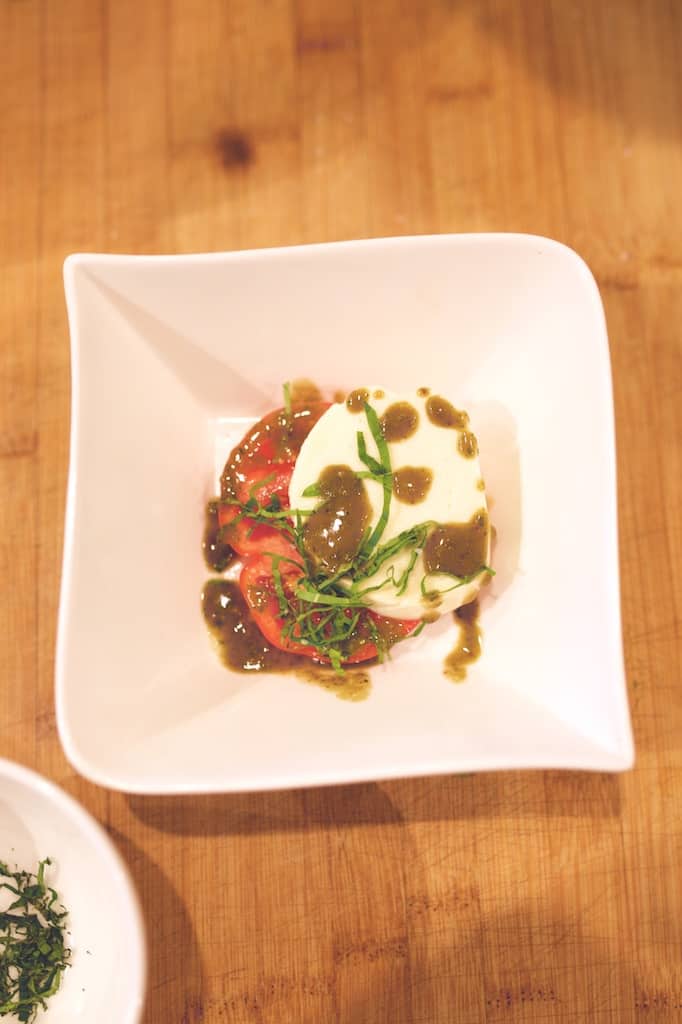
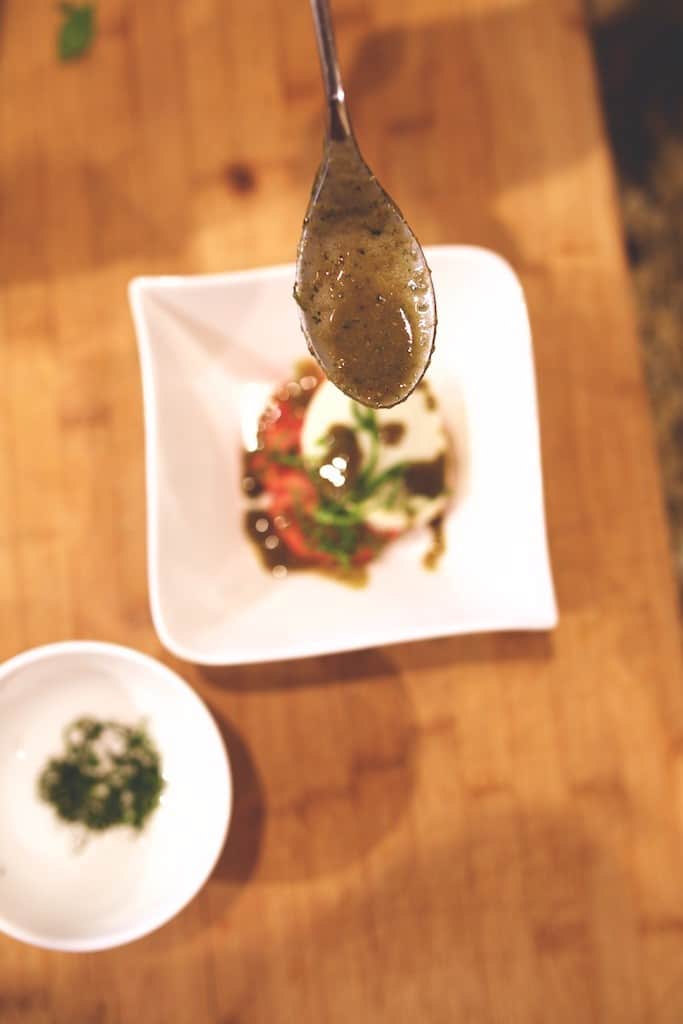
Chef Breland's salad dressing, made quick and easy with a Vitamix
Chef Breland loves the Vitamix for all of his blending/pureeing/making smooth, sexy sauces (my words, not his). I see the Vitamix everywhere—on cooking shows, at restaurants, in Costco. I have to admit that I'm always wowed by the amazingly smooth texture the Vitamix produces, eliminating much of a home cook's need to strain sauces to make them smoother and thus saving valuable time and effort. The day I visited Chef Breland, he whipped up a salad dressing of shallots, Dijon mustard, fresh basil, balsamic vinegar, and olive oil in mere seconds.
I don't have a Vitamix, and our budget doesn't allow me to impulse shop a $650 mixer, so I didn't test one for this blog post. However, I do have to admit that I've also never really lusted for one because of its very steep price tag. It's like wishing that I lived in a Kardashian-style mansion. It'll never happen for me, so what's the point?
On the other hand, I've had a professional series Cuisinart food processor for years that I would probably save from a burning building. It's seen me through a lot of glorious food moments, like the day I perfected my avocado crema (it's got moves like Jagger, it's that smooth). With my trusty Cuisinart by my side, I've chopped nuts, whirred impromptu smoothies, and pureed shimmery butternut squash soup. That being said, I also don't own a blender and thought that adding one to my kitchen lineup might be nice. I explored lots of different options before settling on a Ninja Master Prep Professional ($40) to supplement my aging Cuisinart. The price tag was awesome, but the verdict's still out on it. I'll let you know.
Verdict: Get the Vitamix if you can afford it. Otherwise, I hear good things about this Breville Boss Blender, or you can go cheapskate like me and settle for a Ninja Master Prep Professional.

Chef Breland recommends the Global 8-inch Chef's Knife as the cornerstone of any chef's kitchen. It's a lightweight knife that retains its sharpness with a solid grip. To demonstrate the Global's nimbleness in the kitchen, I watched Chef Breland slice a lemon like it was soft butter. Anthony Bourdain also swears by them.
Any good home cook should have a solid, sharp chef's knife, and the Global knife looks like a solid one, so I wholeheartedly agree with this recommendation. Years ago, one of my first big purchases for my kitchen was a Henckels chef's knife, and to this day it's still one of my most-used knives. However, the Henckels is a bit heavier and cumbersome than the Japanese knives (I have a Shun utility knife, which is a swift, agile little cutter), so if I ever have to replace my Henckels, the Global knife will probably be my first choice.
Verdict: Regardless of the brand of knife you choose, visit a store in person to try lots of different brands and sizes out in your hand before purchasing. You can always shop around online for the best price later. Start with an 8-inch chef's knife, and avoid purchasing a knife block set —you end up with a bunch of knives you don't need taking up valuable real estate in your kitchen.


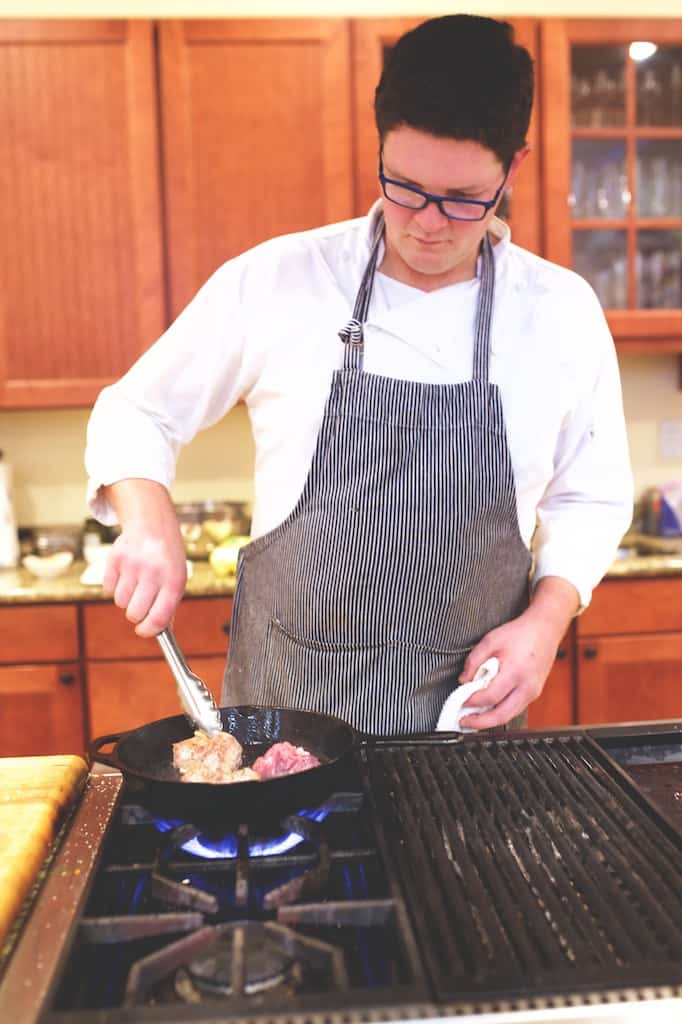
Chef Breland uses cast iron all the time. I see him cooking on cast iron pans nearly every time I'm at The Coastal Cupboard. He told me that cast iron is great for infusing flavors into food and that the pans last forever, which seem like two huge reasons to use it. Nevertheless, I've always been a little intimidated by switching over exclusively to using cast iron, both because of the weight and the maintenance involved. Seasoning cast iron always seemed really daunting to me, as was cleaning it. Plus, I didn't want to invest in a bunch of cast iron pots only to have them rust on me.
Luckily, Chef Breland showed me a great trick for seasoning and cleaning cast iron. Seasoning, or baking a layer of oil into cast iron, is important for imparting flavor into foods cooked on cast iron and also maintaining a non-stick surface. To season a cast iron skillet, Chef Breland recommended rubbing a layer of bacon grease (mmm, bacon) and baking the pan in a 400-degree oven for about 30 minutes. After letting it cool completely, wipe any excess oil out with a dry paper towel and the pan is ready for use.
For cleaning, Chef Breland pulled out a jar of kosher salt and went to town:

As it turns out, tossing a bunch of kosher salt on a cast iron pan and then wiping it out with dry paper towels is a great way to have an abrasive cleaner on the cast iron without damaging it. As an added bonus, the cast iron gets even more seasoning from the salt. Watching Chef Breland do this to his cast iron pot was like peeling back the layers on the tomb of King Tut—a great mystery, solved. I immediately ran to the front of the store and add a Lodge cast iron pan to our growing pile of purchases.
In the months since, I have to say that I wished I'd bought a bigger cast iron pan, like this 5-quart chicken fryer. I cook the way a good Southern woman (or if I'm comparing myself to my father, an aging Chinese man—sorry, Dad) cooks—in enormous quantities. To be honest, the 12-inch version of this pan feels kind of like a doll's pan to me. I can fit like, what, three pork chops? That means I have to fire up my cast iron pan three times to cook everything I need for an average dinner. Yeah, my family can eat nine chops. What? What.
But the 12-inch is perfect for our weekend scrambled eggs, searing fish, and sauteing side veggies. As it turns out, I love the layers of flavor imparted by the cast iron, and I'm a total convert.
Verdict: For couples or small families, a 12-inch skillet should be in the kitchen. Larger families might want to consider using a chicken fryer. The flavors and ease of cooking, once you get used to the maintenance, is totally worth it. Consider also getting a silicon handle holder.
Okay, seriously, I'm still hung up on the fact that I made nine pork chops last night. Maybe we need to dial it back a little bit.